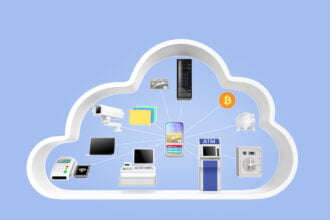 In my previous article, I talked about the need for retail point of sale systems to be integrated with big data solutions. As I explained in the article, such integrations help retailers understand customer movements, shopping behavior better and this can in turn help them optimize store layout as well as personalize the shopping experience for each of their customers.
In my previous article, I talked about the need for retail point of sale systems to be integrated with big data solutions. As I explained in the article, such integrations help retailers understand customer movements, shopping behavior better and this can in turn help them optimize store layout as well as personalize the shopping experience for each of their customers.
 In my previous article, I talked about the need for retail point of sale systems to be integrated with big data solutions. As I explained in the article, such integrations help retailers understand customer movements, shopping behavior better and this can in turn help them optimize store layout as well as personalize the shopping experience for each of their customers.
In my previous article, I talked about the need for retail point of sale systems to be integrated with big data solutions. As I explained in the article, such integrations help retailers understand customer movements, shopping behavior better and this can in turn help them optimize store layout as well as personalize the shopping experience for each of their customers.
But before you can even get there, there is one challenge at hand for small retailers – scaling their business up sufficiently enough for big data to make sense. Big data is all about connecting millions or billions of data points to decipher patterns of user behavior. While big retailers with annual turnover in the billions stand to gain from this technology, the need of the hour for small retailers is to adopt technological tools that will help them scale. There are two ways of doing this.
Multi-Channel Approach: A lot of brick and mortar retail businesses are now partnering with online platforms like Amazon or Groupon to find a larger market for their products. In a lot of ways, this is a double-edged sword – retailers definitely get access to a larger market for their products. But these marketing channels come with their own set of challenges. Pricing in an online medium is much more cut-throat than what it is in a brick and mortar store. Consequently, the margins are much lower. This puts a strain on your relationship with a loyal offline customer who realize that they are getting a raw-deal. Lowering the price on your brick and mortar store is not really an option considering the real-estate and stock-holding costs that come associated with it.
Expanding Footprint: This is done by opening more retail stores to cater to neighborhoods you did not serve before. The challenges here are the exorbitant capital costs required to set up each of your new store.
In some cases, retailers that launched online have started opening brick and mortar stores to serve specific neighborhoods. In all these cases, there is one pertinent challenge – how does a retail owner scale up from handling transactions and supply chain for one retail location to serving multiple channels and handling the supply chain for each of these channels.
The answer to this is integrating the point-of-sale systems for each of these different channels to create a consolidated database that brings together the transaction details from all these different channels into one dashboard. Such a cloud-integrated POS system provides you with a host of valuable information like – customers who buy from you over more than one channel or store, what products are popular over various channels and the inventory demand across these various outlets. This helps you in devising a strategy that ensures your loyal customers across channels are incentivize to continue transacting with you irrespective of the channel, and in demand planning.
This is not the only benefit of integrating your multiple POS systems through a cloud. Such systems also make it possible for a retailer to accept payments more seamlessly. Cloud based tools work over any platform that is connected to the internet. This means you could as easily accept payments over your iPhone as you could from your POS hardware. For small businesses, this is less capital intensive and is hence a better strategy to scale up.
Big data is surely the future of retail POS. But cloud integration is the present. As a retail business owner, it is high time to plug your point of sale to the cloud in order to reap the rewards that such an integration would bring. What are your thoughts?







